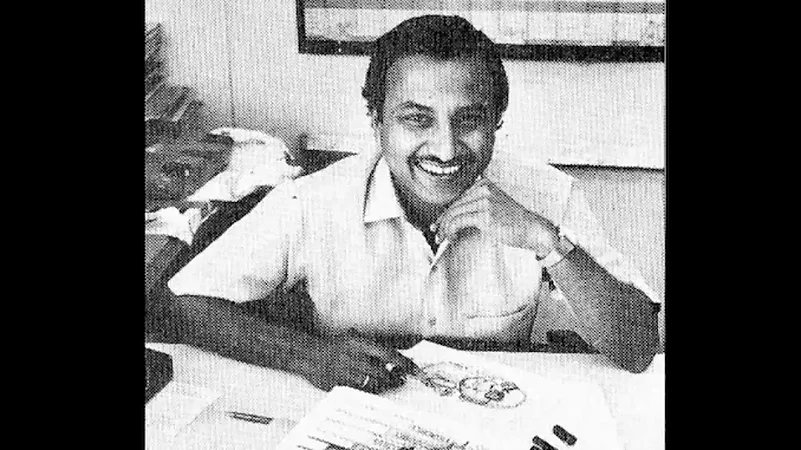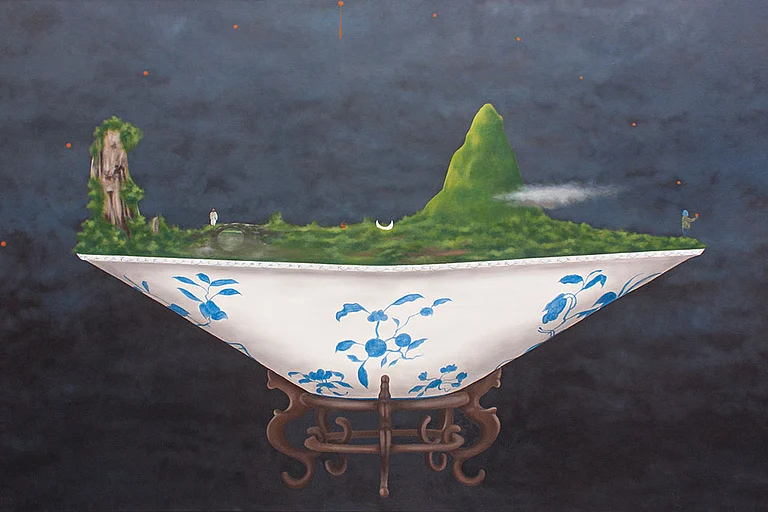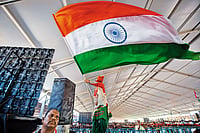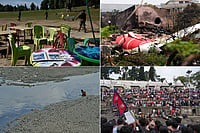Ajit Ninan, a dear, dear friend and a loveable senior of those golden years of visual journalism, passed away this week. Ninan left behind a legacy of cartooning and illustrating on which many artists in Ajit’s lifetime and much after will look at Ninan’s body of work as a reference point for descriptive illustrations. Ajit Ninan will remain the gold standard for magazine cartooning.
He belongs to the gallery of print journalists who came out of the Emergency’s censorship era. But I look at Ajit as a journalist who within his eminency was among the pioneers who led the transitioning of visual journalism from only black in reproduction to colour during the early to mid-80s.
Sophisticated offset colour printing had become possible in India in this period which made the publishers see an opportunity to earn lucrative advertising revenue from the consumer durables boom that the Indian middle class was experiencing for the first time in the mid-80s. Colour magazines, in the times of still-nascent television media, had a field day shoring up advertising revenue. The publisher, in this changed scenario, had to pay more attention to how well the publication looked as much as how well it read. This was a splendid moment for visual journalists to seek greater attention and carve out a niche for themselves in storytelling. Ajit Ninan flowered in the backdrop of these transformative favourable conditions when illustrative news and comment often got prevalence over printed words. The coming of digital technology in the future years further increased possibilities of visual narration.
I worked with Ajit during the initial years of Outlook in the mid-90s. And oh, what a phenomenon Ajit was. Much of the attention Outlook received visually those days was due to Ajit's funny and sometimes subversive caricatures. The way he caricatured Narasimha Rao, Sonia Gandhi, PA Sangma and many other actors in public life left the readers and all of us in the office in splits. One of my favourites was Ajit's drawing of Jaswant Singh riding a camel — he drew both Jaswant and the camel bearing similar visage, both flaring up their nostrils in hubris, their eyelids half-closed in nonchalance.
Ajit would keep the whole Outlook office in great humour — telling us jokes aplenty, even on tense press days. A joke he would repeat about himself was how his in-laws at the time when his marriage was being arranged thought Ajit was the famous editor TN Ninan. Ajit would regale us by adding that TN's family lorded over hills in Kerala, whereas, he a poor cartoon(ist) and his family — a modest middle class.
Ajit often won over people by scribbling caricatures of them. He did that in a jiffy. Sometimes, on the reverse of a discarded printout or any scrap of paper that lay around. I wonder if there is anyone who has worked with Ajit and hasn't received a sketch of themselves from him. Ajit was so generous about this.
We had a very lovable relationship between us. Though Ajit was a quarter-generation ahead of me and was already an 'auction category pro'. Yet, that exalted status of Ajit never came between us. In the few years I worked with Ajit, I saw this great artist of our times transition from manual to digital. Being younger than him and therefore more tech-eager I had a role in familiarising Ajit with the tools and tricks of digital work. Ajit drew with amazing control and clarity with the Rotoring pen and used watercolours to colour his drawings — something for strange reasons he hated to do. He would often pass on the colouring job to an art school-trained person in the design room. With the coming of image-setting technology, which could translate digital files into printable films, it allowed Ajit to scan his drawings and colour them on the Mac. He no longer had to pass on his drawings to a junior for colouring. The software Photoshop allowed him to colour quickly with the option of several undos. Surely Photoshop contributed immensely to Ajit’s prolificity but it took away the subtle colour wash effect of manually coloured drawings. Also, digitally drawn images do not have the tactile uniqueness and archival value of hand-drawn sketches.
A few times every day when we were colleagues, Ajit would come behind my chair, peering over my Mac monitor. After a while he would he would whistle and say, 'Chal Bishy ab isko ghuma de'. This was his way of telling me, wrap up now and let's go for a smoke — it was Wills Navy Cut those days!
Outlook couldn’t hold on to Ajit for very long. India Today, in some ways, Ajit’s karmabhoomi snapped him back. Outlook had forced India Today into going weekly. News magazine business was no longer a lone publications turf. Competition from Outlook was lopping off chunks of the market rapidly. Ajit’s going was a blow to the Outlook editorial. I inherited Ajit’s office-given air-conditioned Marauti 800 — a princely perk for that time!























